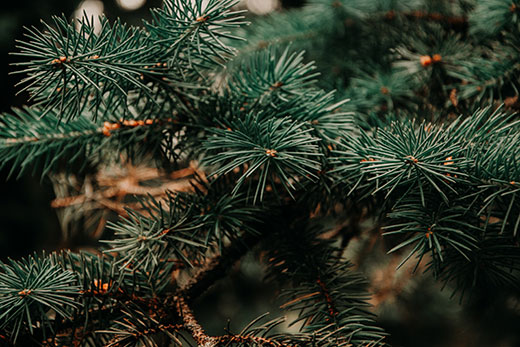
K-State horticulture experts recommend recycling Christmas trees after the holiday passes is over.
After the holidays, here’s what to do with your Christmas tree
Trees can provide habitat for birds and fish, or used as firewood
Dec. 17, 2020
MANHATTAN, Kan. – Once the holiday season has passed, homeowners still have at least one pretty important job to do: Disposing of the Christmas tree properly.
Kansas State University extension forestry specialist Charles Barden notes many towns in Kansas offer curbside pickup for Christmas trees, which are then ground up for mulch or burned.
Short of that – or if you miss the designated in your community – some other ideas that he offered include:
- Tie the tree to the corner of a backyard deck, deciduous tree or to a post near a bird feeder. Then spread some birdseed. The tree will provide cover for predators and block the wind on cold nights.
- Sink the tree in a pond to improve fish habitat and fishing. The tree serves as a coral reef for minnows and other smaller aquatic life. Larger fish are drawn by the shade and presence of prey.
“To sink a tree, tie the base to a cinder block with a short, stout rope, and toss it in,” Barden said. “Just be sure to get permission from the pond owner first.” - Clip branches and use them for insulation and mulch for semi-hardy plants like roses. Split and dry the trunk for kindling; however, pitch pockets in the wet wood can explode when burned, sending hot embers up the chimney or across the room. Thus, Barden discourages burning a green Christmas tree inside.
Barden and his colleagues in K-State’s Department of Horticulture and Natural Resources produce a weekly Horticulture Newsletter with tips for home and yard. The newsletter is available to view online or can be delivered by email each week.
Other holiday-related tips from the newsletter include:
- Caring for fruit baskets. Keep fruit in cool conditions to preserve its quality as long as possible. Thus, it is wise to disassemble the basket as soon as you receive the gift. Store bananas and other tropical fruits separately. With proper care, fruit may be able to be eaten 3-4 weeks after unwrapping the basket.
- Storing pecans and other nuts. Excessive water loss can lead to shriveled nutmeats, and the fats and oils can quickly spoil (develop an off-flavor or rancid taste). Nuts quickly absorb flavors from other products, so store them in a tightly sealed container. If stored properly, nuts can be stored in a freezer for up to one year, but using them within six months is preferred.
Interested persons can send their garden- and yard-related questions to Ward Upham at wupham@ksu.edu, or contact your local K-State Research and Extension office.

